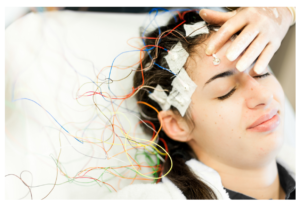SomnusNooze
 If you are uncertain whether you have idiopathic hypersomnia (IH) or narcolepsy type 2 (NT2), you are not alone. Sleep doctors are also asking this question, as sleep study results on the same patient often alternate between IH and NT2 diagnoses. Sleep researchers interested in hypersomnias are searching for more reliable ways of distinguishing between different types of hypersomnia.
If you are uncertain whether you have idiopathic hypersomnia (IH) or narcolepsy type 2 (NT2), you are not alone. Sleep doctors are also asking this question, as sleep study results on the same patient often alternate between IH and NT2 diagnoses. Sleep researchers interested in hypersomnias are searching for more reliable ways of distinguishing between different types of hypersomnia.
Today, the number of SOREMPs in an MSLT study is the primary differentiator between an IH or an NT2 diagnosis. Unfortunately, the number of SOREMPs is not stable in many individuals, making it an unreliable test to distinguish between diagnoses. Given mounting evidence that some forms of IH are clinically indistinguishable from NT2, the idea of revising how we classify hypersomnia disorders into different diagnoses has become a topic of discussion.
In a recent article, “To split or to lump? Classifying the central disorders of hypersomnolence”, a team of global hypersomnia clinician-scientists proposes that NT2 and IH without long sleep time be combined into a single diagnostic category called “narcolepsy spectrum disorder.” Narcolepsy type 1 and idiopathic hypersomnia with long sleep time would remain distinct diagnoses. For more details on this proposal and the evidence supporting a change in classification, the free full text of the article can be found at this link.
For the proposed change to take effect, the new diagnostic criteria would have to be adopted in the next edition of the International Classification of Sleep Disorders, which will be ICSD-4. As of right now, there is no expected date for a future edition. There are likely to be additional proposals and many more discussions before any change to diagnostic criteria is adopted. For now, it is good to know that our hypersomnia community’s frustration with inconsistent diagnoses is recognized by the global clinician-researcher community and that they are trying to find a solution to the problem.
